Every year, our TV Team complies a list of our favorite and least favorite TV characters. (For example: 2019, 2018, 2017, 2016.) We used to call it a list of Best and Worst TV Characters, but an amazing thing happened over the last several years: It became harder to quantify what’s good and bad because of the massive influx of complicated LGBTQ+ characters, which makes the distinction (thankfully) harder to make. It’s also impossible for us to make those kinds of proclamations when there’s too much TV for all of us to consume. It’s been fascinating over the last two years especially to watch this list become parsed by genre. Many of us pick our favorites in the category of TV we enjoy watching most because there are several characters to choose from in each one, and because we now have the luxury of not watching genres that we don’t like.
In the intro for last year’s list, we wrote that representation is more important than it ever has been. Our definition of “good” representation has changed so much over the last decade. At first it was simply rep that didn’t villainze us, and then rep that didn’t murder us, and now what we need is representation that explores, as we said in 2019, “the fullness of humanity of all LGBTQ+ people at the intersections of the myriad oppressions we face” — especially for people of color and trans people.
Here’s what we loved this year, and what pained us to see.
LEAST FAVORITE
Drew
Villanelle and Eve, Killing Eve

Hello, it is I, Drew Gregory, here with a hot take. If you follow this site closely you might be confused because Eve was literally on my list of favorite TV characters OF ALL TIME. And yeah okay do either of these individuals deserve to be considered the WORST of the year? No. So let’s call this a most unimproved award. I love Killing Eve! And I’m not someone who thinks it should’ve ended after season one. In fact, my favorite season is season two. See the hot takes keep coming! But season three? Sigh. I just hated what they did with the characterization of our leads and their relationship. It rang false and even worse I was bored. I think my issue isn’t necessarily with how they were developed as much as it’s where the focus leaned. Season three prioritized Villanelle as the protagonist and I frankly don’t think it works. She’s better kept an enigma. And while I understand as the seasons continue we need to learn more about her there’s no reason to decenter Eve to do so. Why did we meet Villanelle’s family before Eve’s?? Just a baffling choice and one I’m going to blame on the all-white writers room. Anyway, enough complaining from me today. May season four restore two of my favorite characters on TV back to their rightful place in this roundup!
Kayla Kumari Upadhyaya
Jamie, The Haunting Of Bly Manor
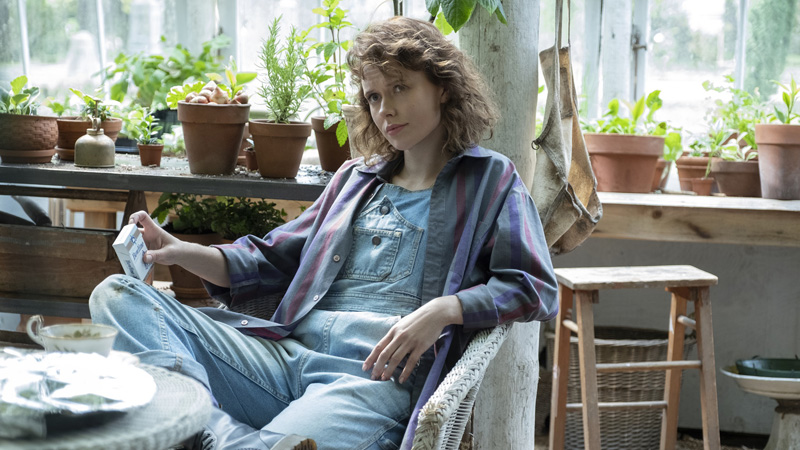
I hesitate to say all this, because I know there are lots of people out there who simply LOVE Dani and Jamie’s relationship. And also, calling Jamie the worst seems a bit harsh when in reality, the character is quite nice and doesn’t really do anything wrong over the course of The Haunting Of Bly Manor. Like, she’s just gardening and mostly minding her own business. Good for her! I just think the character is so woefully underdeveloped that I never really latch onto the romance at the heart of this gothic ghost story.
Eva Rhodes, The Bold Type
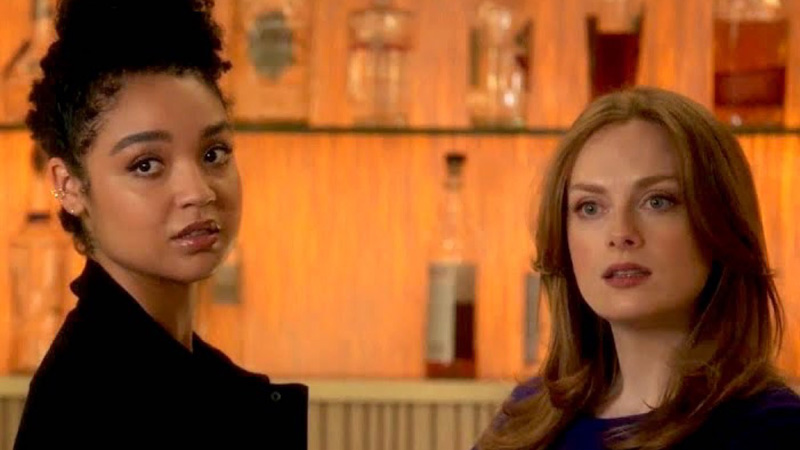
I can’t believe The Bold Type tried to romanticize Kat falling for a GAY REPUBLICAN, and I’m still mad about it!!!!!!
Valerie Anne
Dex Parios, Stumptown

To be fair, Dex wasn’t the worst character overall but they did her real dirty. And her bisexuality seemed like a box they checked and then didn’t really feel like expanding on it all that much. It’s kind of a shame the show was cancelled because I would have been interested to see if they gave Dex oh I don’t know literally any women to befriend, and if they would give her a proper girlfriend or continue to shoehorn her and Grey together. I really wanted to love this show and it made it really hard for me.
The Warrior Nuns, Warrior Nun
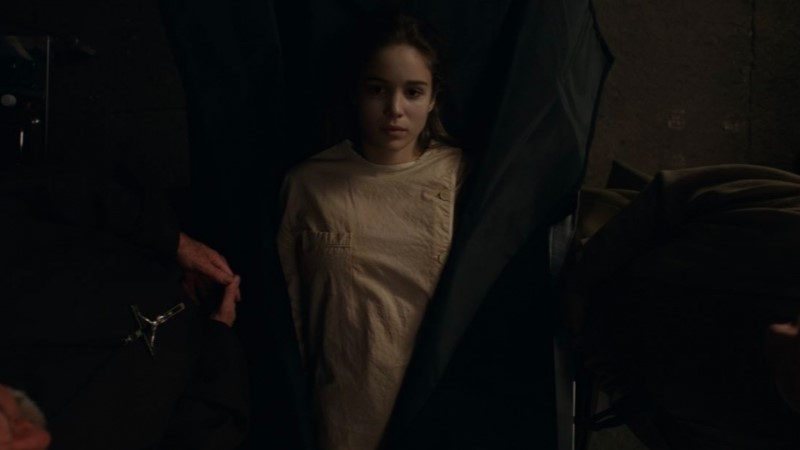
How are you going to have a whole band of warrior women and only very briefly hint at queerness from 900 miles away? Besides the watering down of the queerness from the source material, the signs of queerness are only there if you squint real hard; this show didn’t pass my Dad Test for representation and I’m not going to tell anyone what they should or shouldn’t like but I just want you all to know that you deserve better representation than the crumbs this show tossed in your general direction.
Rin, Siren
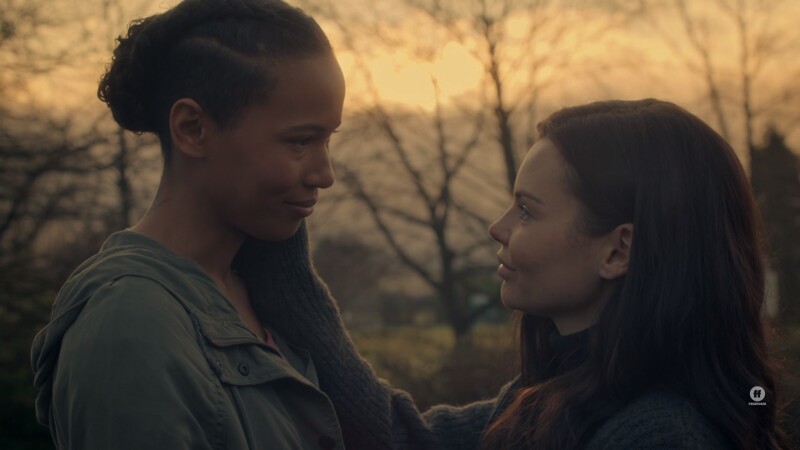
Rin also would also fall under Drew’s “least improved” category because this show went so hard on the throuple and the queerness in the first two seasons then backtracked slowly and steadily in the third and it made me grumpy because all I wanted was to be #hornyformermaids.
Heather Hogan
Eva Rhodes, The Bold Type
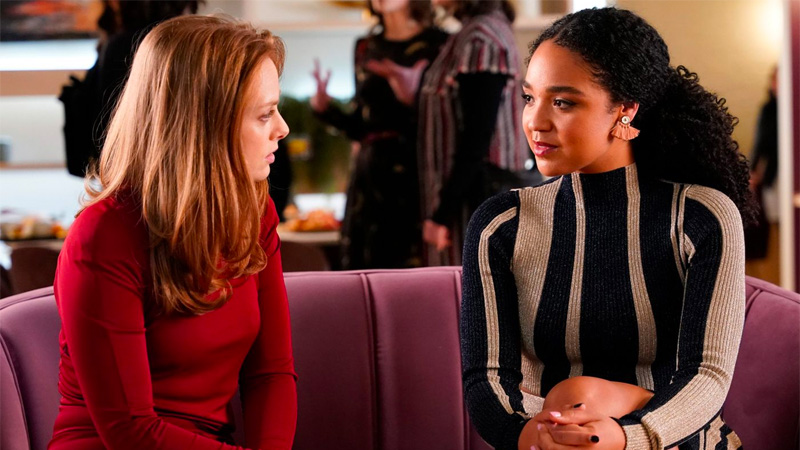
Kat and Eva’s storyline would have been stupid at any point in the last — forever many years, but in 2020? Written several years into Donald Trump’s presidency? At that point it’s not just senseless, or even just offensive; it’s downright harmful. Natalie has written extensively about how The Bold Type seems completely incapable of writing about the myriad marginalized identities Kat embodies. She is a Black bisexual woman whose very serious ex-girlfriend is a Muslim lesbian immigrant. You have to ignore not just one of those things, but all of them, to write this storyline. Who in their right mind is going to write the woman whose first love was Adena El-Amin falling for a Trump goon!? And then having entitled white liberal Jane Sloan — of all people — lecture her about it? I am honestly getting as angry writing about this as I was watching it ten months ago.
Eleanor Shellstrop, The Good Place
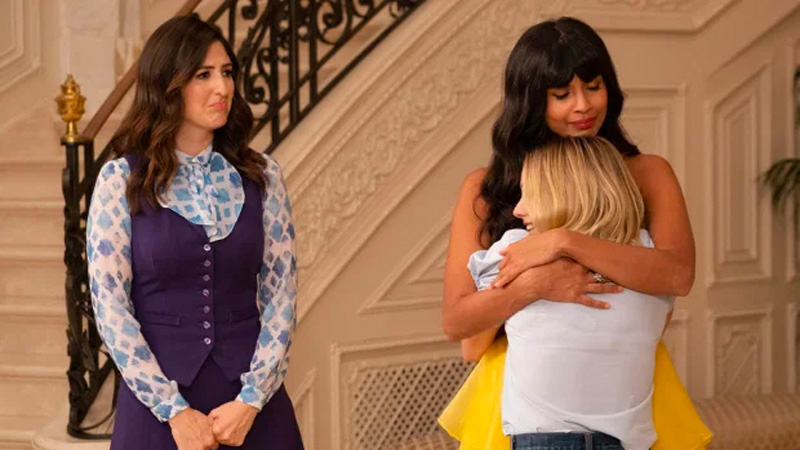
On a show where anything was possible, where a not-a-robot/not-a-girl character became a non-binary icon, Eleanor Shellstop’s bisexuality never paid off as more than a running joke. I love The Good Place. It’s one of my favorite shows ever. I thought the finale was literally perfect. But I can’t help myself; I do feel disappointed that this huge revelation Eleanor had about herself in the afterlife was never explored. It would have made for some excellent storytelling, character growth, and it would have been bisexuality like we’ve never seen it on-screen before. Instead, on this revolutionary comedy, the thing it ended up reminding me of most was Karen from Will & Grace.
Natalie
Kat Edison and Eva Rhodes, The Bold Type
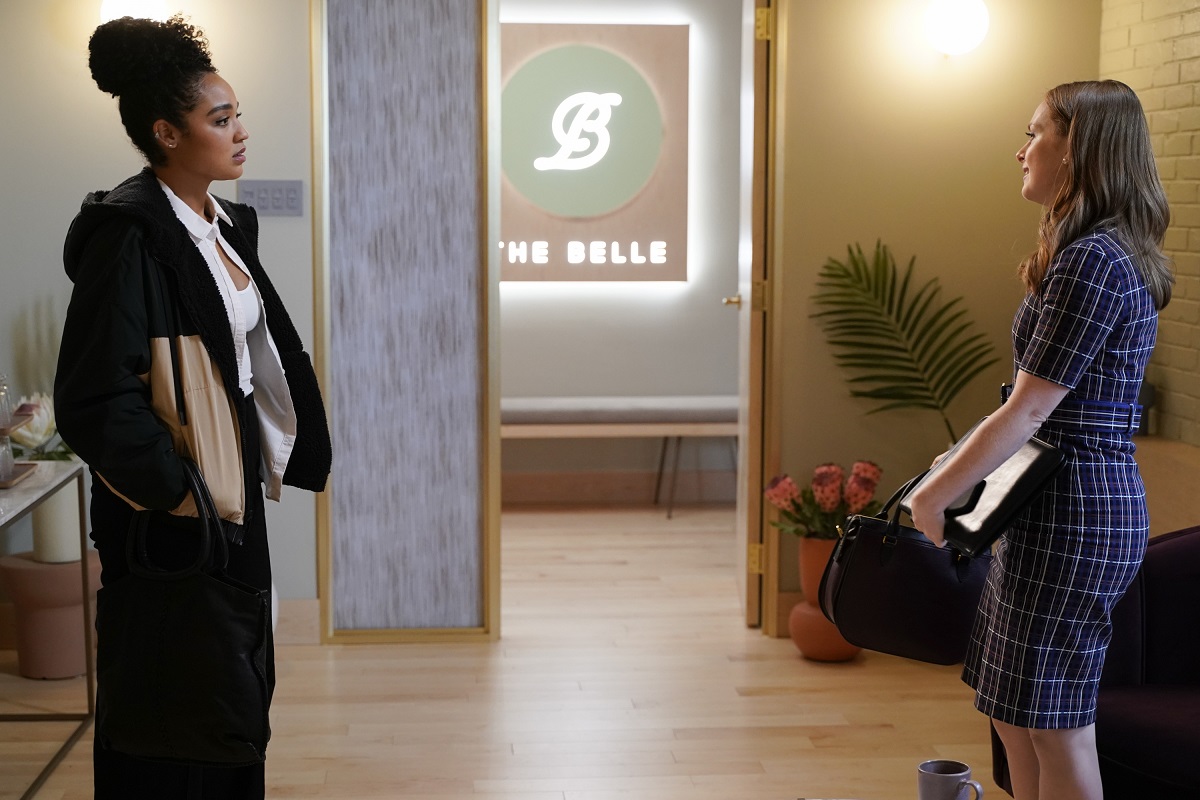
I wasn’t going to write about The Bold Type in this space. I’d written enough about the failures of this Kat/Eva storyline and writing anymore about it just felt like overkill. Plus Kat’s portrayer, Aisha Dee, had spoken out so eloquently and so bravely about the storyline and her experiences behind the scenes…I thought it made sense to let that be the end of it, at least until we know about The Bold Type‘s future at Freeform.
But, as I sat down to write my entries for this post, I was reminded: the first time I participated in the TV team’s end of the year lists, I wrote about Kat Edison. As TV critics fawned over this show and queer fans, in particular, fawned over Kat and Adena, I wrote about how the show had, essentially, erased Kat Edison’s blackness while showcasing her queerness. I wrote about Kat being lectured on her privilege by a white female colleague.
Lots of people joined me in my outrage about this season — I got as much feed back about my Bold Type commentary as anything I’ve written for Autostraddle — but let’s be clear: it wasn’t an anomaly. Any hope that The Bold Type had evolved beyond that first season critique was dashed this season. The romance between Eva and Kat announced, unequivocally, that the writers are only capable of grappling with one facet of Kat’s identity at a time…because that relationship only works if you only think of Kat as queer.
Because, if you see Kat as a multidimensional character…if you see her as biracial and/or black and/or progressive and/or an activist, Eva and Kat don’t happen. Kat doesn’t risk her job, a career in publishing and a lawsuit to release RJ Safford’s tax return and expose his support for “conversion therapy” advocates, to turn around and romance the person who took it all away in the first place. Imagining a relationship between Kat and Eva only works if you make Kat into a shell of a former self — disconnected from her past and, particularly, her past with Adena — and until the season’s final moments, the writers of this show thought that was okay.
It was not okay, it was offensive…and the writers would do well to truly learn from this mistake or hire some new black and queer writers to do what they, clearly, aren’t capable of doing: writing a fully-fleshed out queer character of color.
Nomi Segal, grown-ish
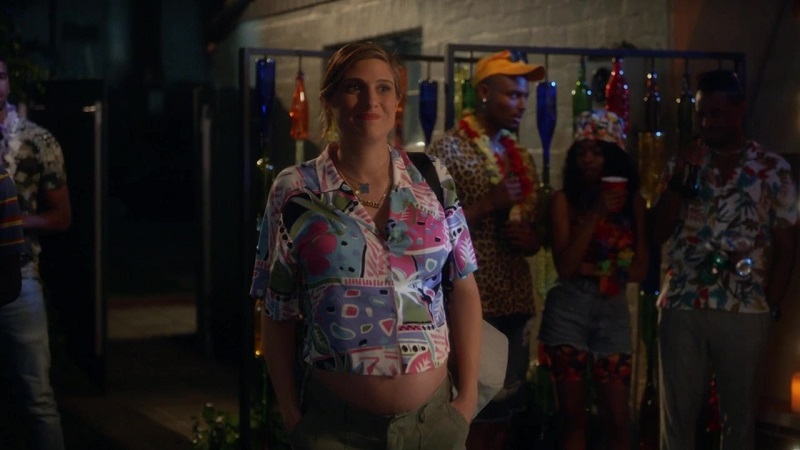
For years, bisexual women on television have been stereotyped as overly promiscuous or hypersexual. Those tropes exist because those depictions were written, not to provide representation to an underserved community, but to titilate heterosexual men in the audience. As a bisexual woman myself, I’m sensitive to those depictions…but, at the same time, I worried about the pendulum swinging too far in the other direction. Were creators so concerned about tropes that they forced their bisexual characters to become prudes? After all, why should bisexual characters compelled to be monogamous, purely to avoid this stereotype, when the real issue is the male audience?
But then enter Nomi Segal, the semi-closeted bisexual freshman that befriends Zoey Johnson during their first week at Cal U. Free from her parents control, she invites one warm body into her bed after the next, without taking on the shame that we often foist upon women who own their sexuality (despite Ana’s best attempts). She had the sass and swagger that television usually reserves for its straight male characters…and I appreciated it.
But, boy, did the wheels come off this season. There wasn’t a single part of Nomi’s storyline that resonated with the character we’d gotten to know. Gone was the swagger and sass, replaced by indecision and clinginess. From the time of conception, to the due date of the pregnancy to the fact that Nomi — of all people — would choose having a baby over exercising her right to choose…not a single thing about this storyline made sense.
FAVORITE
Drew
Emma Hernandez, Vida
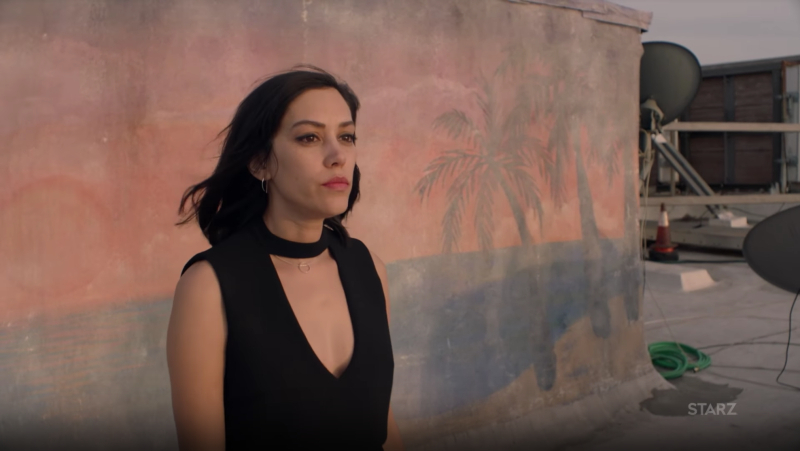
I’ve written more about Emma than any other character ever. She was number one on my list of all time favorite characters and I’ll adore her forever. I have nothing to add that I haven’t said before, but it wouldn’t have felt right to leave her off this list.
Mae, Feel Good
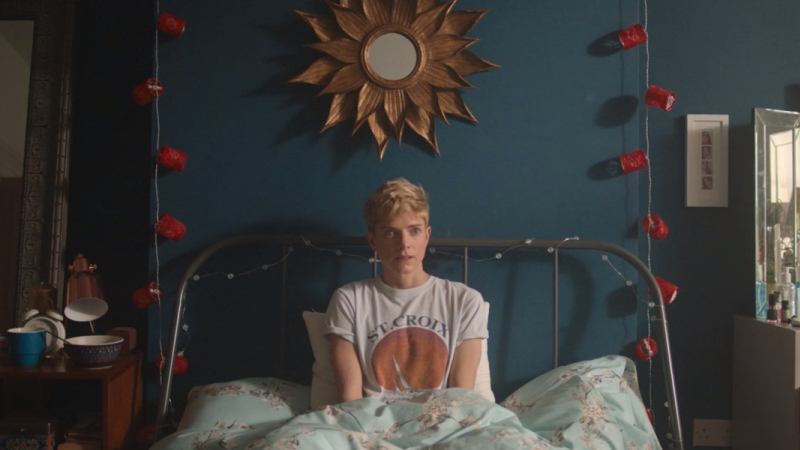
There are few characters I’ve enjoyed spending time with this year as much as Mae Martin’s fictionalized self. They’re funny and sincere and exude charm in moments both light and dark. I’ve seen so little work explicitly about what it’s like to date as a gender nonconforming person and watching Mae navigate that was deeply resonate. And I feel like it’s so rare we get a queer hottie whose charm is awkward and overtalkative! Queer hotties are always so aloof! I appreciate how Mae is anxious and insecure and lost in herself and the world but still a heartthrob. Representation matters, folks!
Uncle Clifford, P-Valley
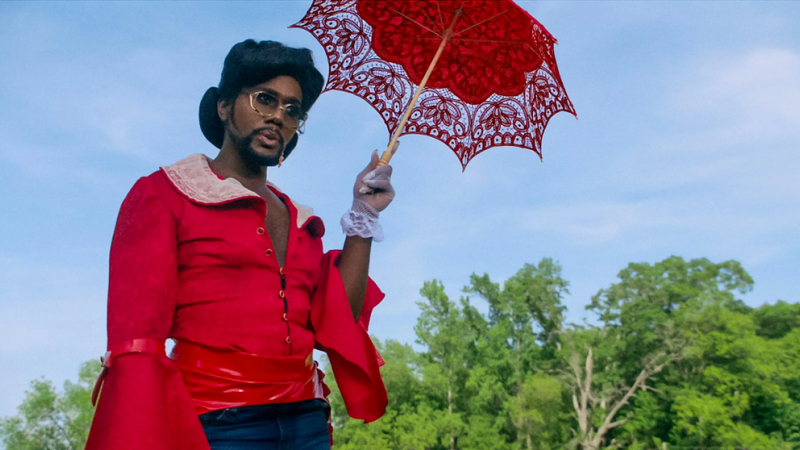
Gender nonconforming Uncle Clifford falls in a sweet spot where I don’t mind that he’s played by a cis queer man but I am going to include him on this list. Mostly I just want to call attention to this character and this show that does not explicitly have queer female leads BUT is a show I think most queer women and just all people would appreciate. Uncle Clifford owns The Pynk, the strip club the show is centered around, and his ever changing outfits, hair, and gender presentation are as amazing as his personality. He acts as the club’s tough mommy of tough mommies as well as the city’s ever scheming outsider. His love story with Lil Murda is lovely and complicated and I love watching him find the balance between his feelings and boundaries. I will think about the moment with them in the forest and Valerie June on the soundtrack for the rest of my days.
Mia Warren and Izzy Richardson, Little Fires Everywhere
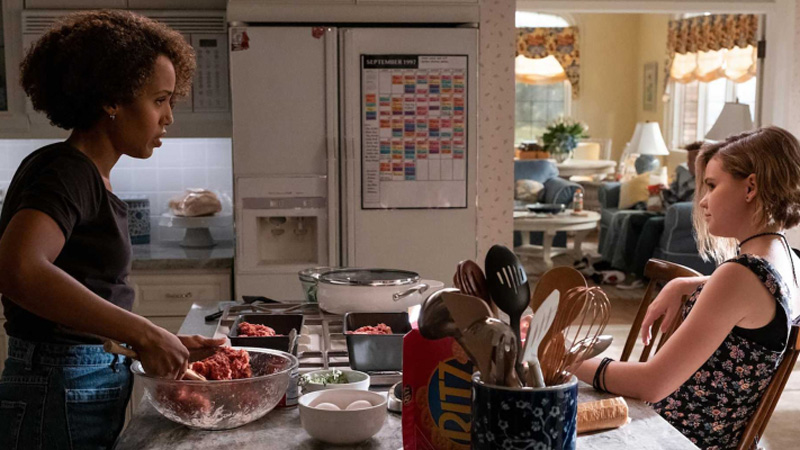
I was somewhat late to this series and I happened to binge it when I was stuck at my parents’ house in the suburbs for two weeks. That’s what I would call an immersive experience! Mia and Izzy are very distinct characters, but I love watching them both navigate their difference in the face of the monotonous sameness of suburbia. They rebel and they connect and they find something like chosen family with each other. The decision to make both of these characters queer for the series was not simply appreciated because I like queer characters — it becomes integral to who they are and why they’re drawn to one another. I can’t imagine them any different than they are here. Two lost queers in a painfully straight world.
Kayla Kumari Upadhyaya
Beth Cassidy and Addy Hanlon, Dare Me
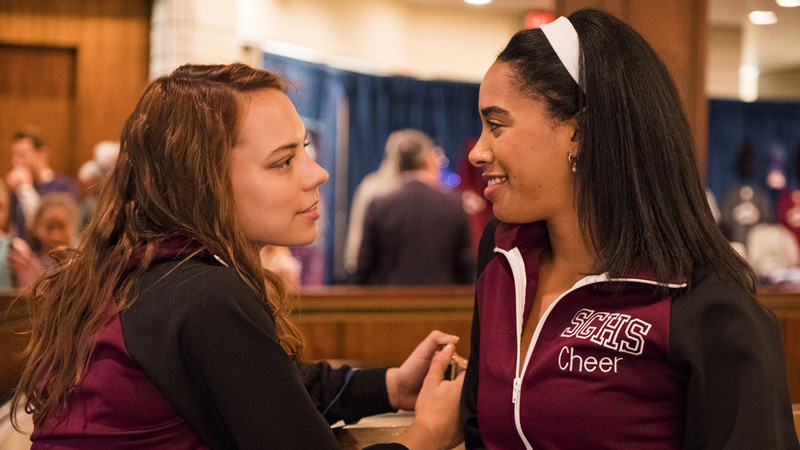
Dare Me is one of the most underrated television shows from the past year, and I will seize every opportunity to shout that at people!!!!! Beth and Addy’s complicated, fraught, and sometimes toxic best friendship is a major focus of the thriller, and I don’t want to give too much away about what happens between them because I want you to WATCH THE DAMN SHOW, which will be hitting Netflix at some point. But Beth and Addy are very well written, messy, mean teen girls full of contradictions and complexities. Their dynamic is very Are They Going To Destroy Each Other Or Are They In Love? Which, yes, happens to be one of my favorite dynamics.
Fabiola Torres, Never Have I Ever
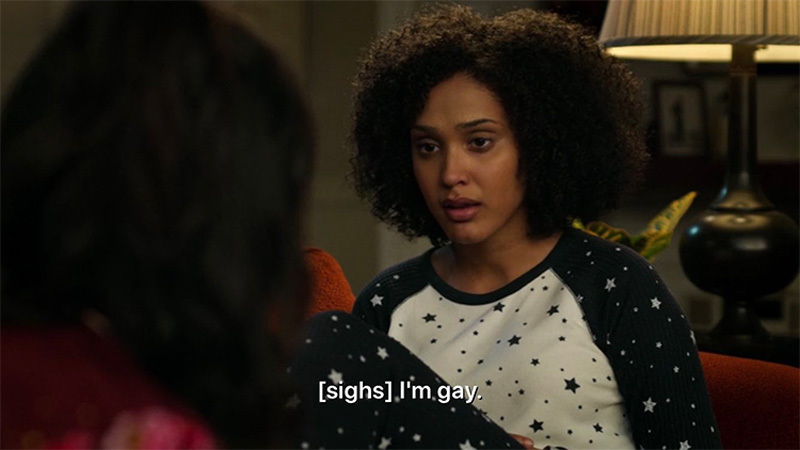
I found Never Have I Ever to be very uneven in its first season, but I do really enjoy lil gay nerds, and Fabiola is a super sweet lil gay nerd.
Valerie Anne
Hope and Josie, Legacies
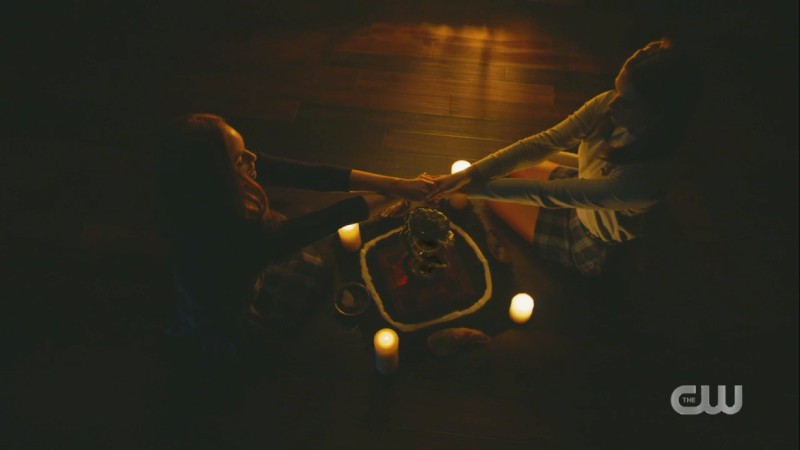
I LOVE QUEER TEEN WITCHES. And even though I don’t think the show is going to give us the Hope/Josie relationship I so desperately want, these two girls continue to be so much fun to watch. They are strong and messy and complicated and determined and loyal and hilarious. (Though also I just ship them both + happiness so if Josie/Jade is the ship I should get on I’LL GET ON IT.) This silly little spinoff of The Vampire Diaries brought me more joy than I ever could have anticipated, and due in no small part to these two.
Bess Marvin, Nancy Drew
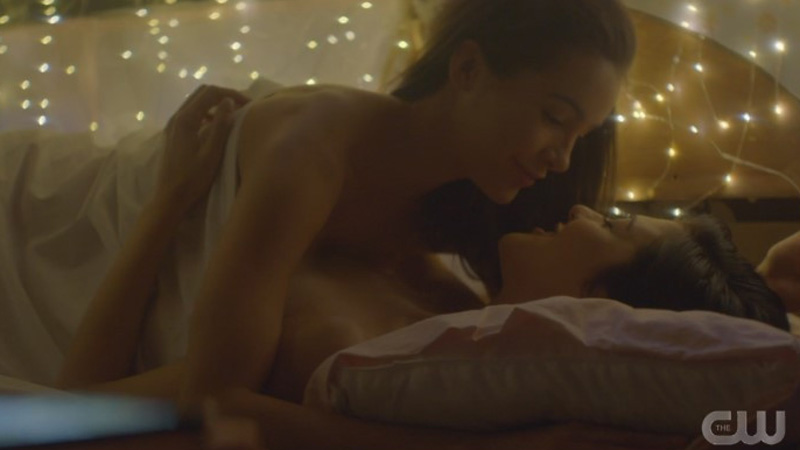
Nancy Drew is another show that I enjoyed far more than I expected, and the queering of Bess Marvin is a cherry on top of this mystery romp. Of course I’m trash so I ship Nancy and Bess despite there being a perfectly lovely canon relationship between Bess and Lisbeth, but either way, the silly, quirky, easily distracted, estranged, kind heiress of an evil fortune is a delight to have on Team Gay.
Alex Danvers, Supergirl
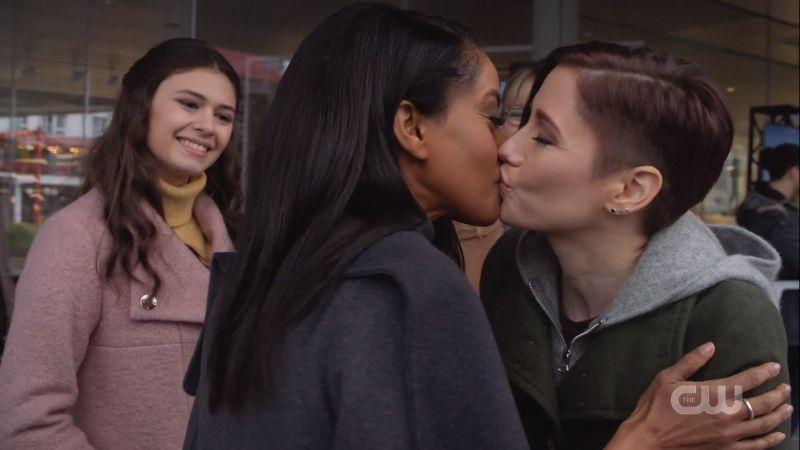
While the show itself has made and continues to make missteps on and off screen, there’s no denying that Alex Danvers is a lesbian superhero. She might be human, unlike her teammates, and she might not have super strength or shape-shifting abilities or prophetic dreams, but she has a huge heart, tactical brilliance, and loyalty built into her genetic code. Her relationship with Kelly isn’t quite fleshed out enough to make my favorite couples list, but through no fault of hers or Kellys. Though I will say Kelly is proving to be exactly what Alex needed, keeping her grounded, and I hope we get to see more of those two in the final season. I would also like to take some space here to shout out the amazing Nia Nal, who doesn’t get nearly enough screentime but who shines whenever she does appear. (Also I want little more in life than to befriend Nicole Maines but that is neither here nor there.)
Natalie Morales Michelle Gutierrez, Dead to Me
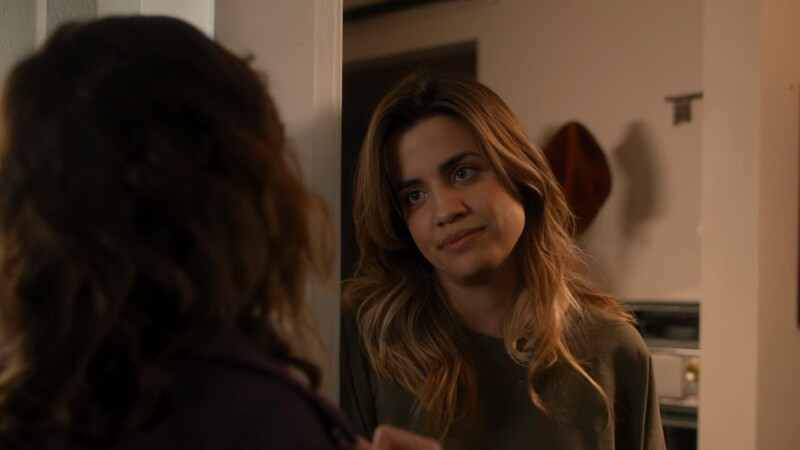
There’s something about the way Natalie Morales plays Michelle, with an ease and comfort and magnetism that grabs your attention and refuses to let go. Especially since the show bounces back and forth between being tightly wound and chaotic so to have a character slide in all calm, cool, and collected is noticeable and very enticing. Plus we love when queer people play queer people.
Heather Hogan
Annalise Keating, How to Get Away With Murder
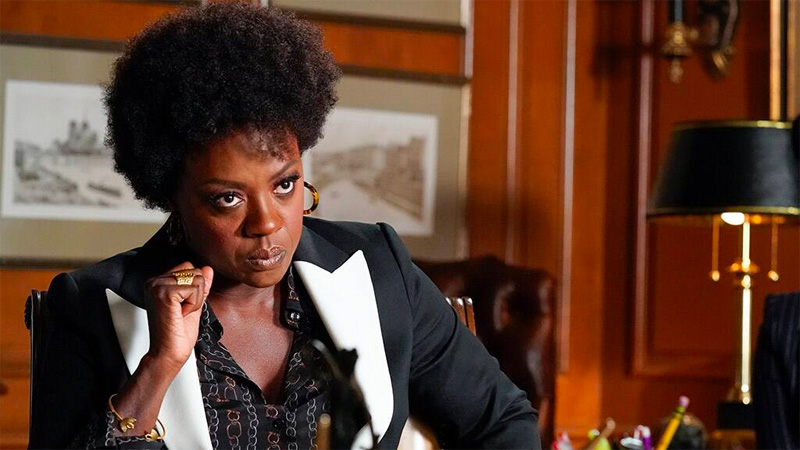
I don’t want to write this because I don’t want to say goodbye to Annalise Keating, and while I know that Viola Davis is only going to go on to play a zillion more brilliant roles and win a zillion more awards — let’s go, EGOT! — for them, including her upcoming turn as Ma Rainey, having an actress of her singular caliber on broadcast network TV every week as a proud Black bisexual woman was a revelation and a revolution. I will, now and forever, point you to Natalie to read about Annalise (and Tegan), but I just want to add my name to the endless list of people who mourn her loss, and cheer that the show did her such justice in the end. There will never be another Annalise Keating because there is only one Viola Davis, and it was an honor to watch her in this role.
Poison Ivy, Harley Quinn
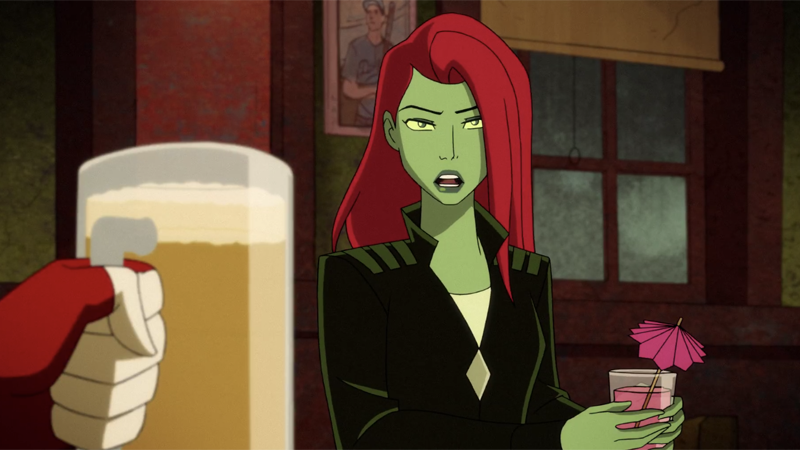
Harley Quinn’s second season is honestly a perfect gay season of TV that includes massive individual character growth for both Harley and Ivy, and a super fun and super satisfying love story that — spoiler alert! — sees them riding off into the sunset together in the exact same car they escaped in during their first episode of Batman: The Animated Series in the ’90s. Ivy, especially, was an absolute delight in season two, as she grappled with her feelings for Harley, her boring as heck relationship with KiteMan, and the dissonance of loving an agent of chaos while also longing for some stability and security. One of my most favorite types of queer characters is the deadpan sarcastic misandrist with a heart of gold, but those are usually supporting characters and hardly ever have whole seasons dedicated to peeling back their layers to reveal their soft caramel center.
Marceline, Adventure Time: Distant Lands
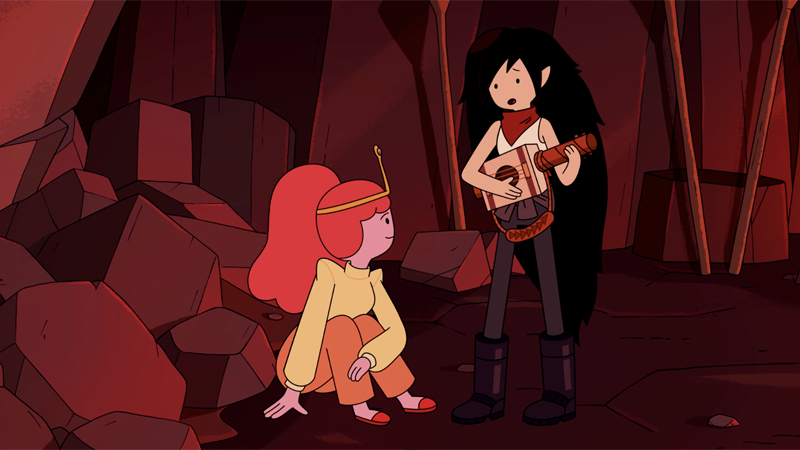
Speaking of deadpan sarcastic misandrist supporting characters with a heart of gold, Marceline the Vampire Queen returned to our screens one last time in Adventure Time: Distant Lands — Obsidian, and not only did the epilogue show us Bonnie and Marci in domestic bliss, it also filled in basically all the blanks of their relationship and moved them both forward even more on their own journeys. Marceline was, of course, the breakout star of Adventure Time, but even her own mini-series wasn’t enough to answer all the questions fans had about her. Obsidian pulled together her childhood trauma, her early punk-rocker days, and her current more mellow but still kinda feelings-timid self. We learned how, exactly, she and PB ended up estranged, and how much Marci has grown, and how PB is the pink in her cheeks and she’s finally okay with being a little bit soft. Obsidian is hands-down the best pay-off I’ve ever seen for queer TV characters. It was just subtext, and then a little maintext, and now it’s one of the greatest gay stories ever told. I almost can’t even believe it happened.
Catra, She-Ra and the Princesses of Power
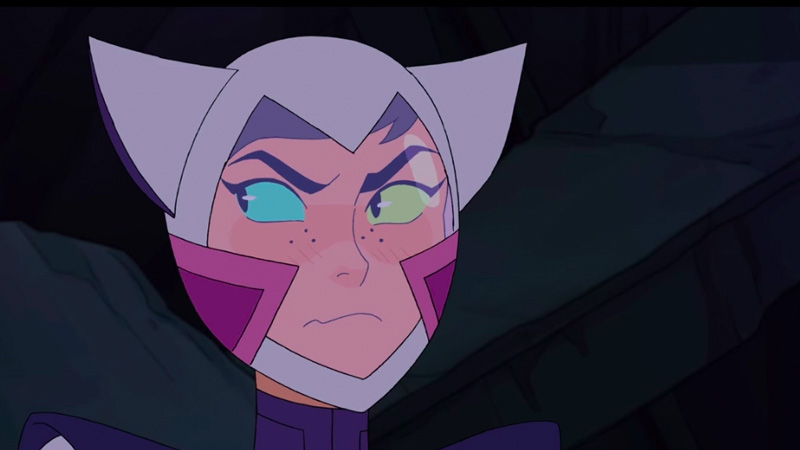
Oh. Ha! Welp, another tough cookie with a gooey center! I’ll be the first to admit I thought Catra’s story had been pushed beyond redemption before the beginning of the final season, but the funny thing about love is that it flares up at the most inconvenient times and makes you do things you never thought you’d do. In Catra’s — the queen of self-preservation — case, sacrificing herself for Adora and her princess rebellion pals. But the bravest thing Catra did wasn’t risk her life for Adora, which, by the way, was a repeated gesture in the final season — she also risked her heart. She confessed her love to Adora and begged her to stay. And that was the thing that saved the day! Adora found the strength to save herself because she found the strength to save Catra, and once that was done, she saved the entire universe. GAY LOVE SAVED THE GALAXY. The final season of She-Ra and the Princesses of Power was all the best things about all the greatest fantasy, sci-fi, animated, and queer stories — and it allowed us to see these lesbian characters in ways we only ever get to see straight male heroes.
Elena Alvarez, One Day at a Time
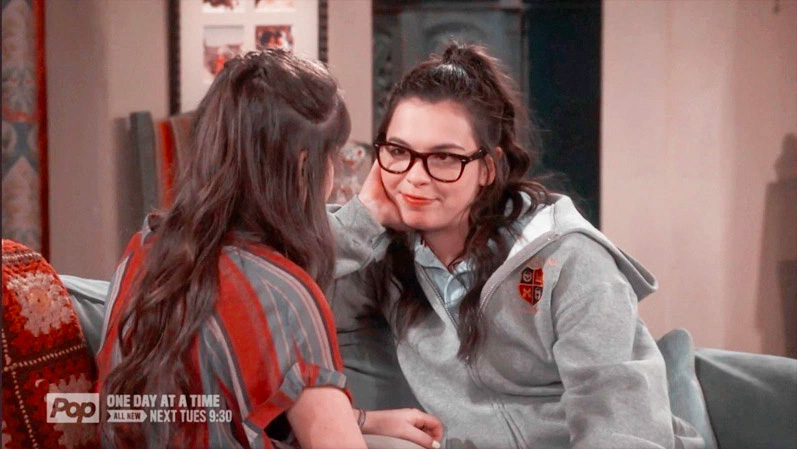
I’m not sure what else to say about Elena that I haven’t already said. She reminds me SO much of myself. Just this complete and total lesbian nerd who takes everything too seriously but is also such a goof, who loves her partner and her family above everything, and has big dreams and big plans and even bigger anxiety. In the history of TV, I have never been more relaxed watching a TV show than I was watching One Day at a Time, because even though there were plenty of lesbian jokes, none of them ever felt like punching down. They were all crafted with love by a team of writers that included so many queer humans, and the people delivering them were full of nothing but endless affection for Elena. I wish One Day at a Time‘s road had been easier, and I wish it was still going strong, but I guess the adversity surrounding it probably made me appreciate it even more. I feel so lucky that I got to watch this labor of Latinx love succeed for as long as it did.
Angelica Kennard-Porter, The L Word: Generation Q
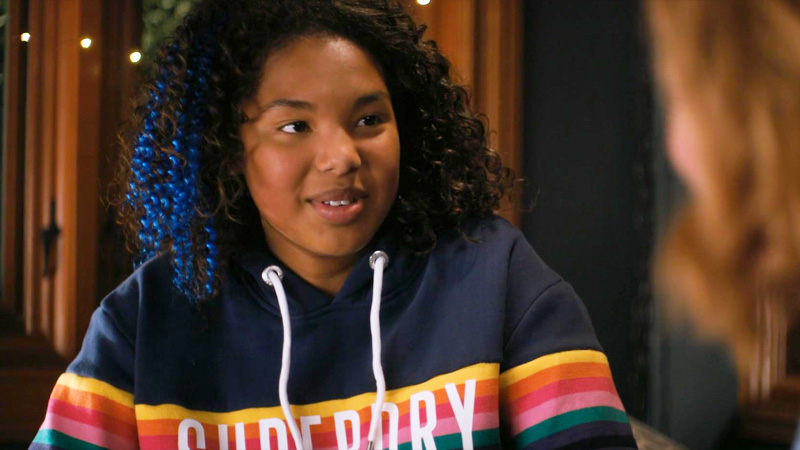
To be honest, I got my fill of WeHo’s lesbian scene when the original The L Word was on TV, and what ultimately made me cave and watch Gen Q was Angelica. Dang, she was a cute baby! And she was an even cuter queer teen! Shy and sweet and such smart-assery! I loved her relationship with Bette more than I have ever loved anything about Bette. Same with Shane. And her crush on Jordi was so real it made my little youthful heart bang around inside my chest like I was back in high school. Angelica made Gen Q for me, and I would happily watch a five-season spin-off about her life.
Kate Kane, Batwoman

Seeing Kate Kane come to life on my TV was a dream come true. I’ve been reading comic books for as long as I can remember and following Batwoman from the very second she came out, which coincided so closely with my own coming out. It wasn’t Ruby Rose who made the character for me, though I did really enjoy seeing a masculine of center character swagger around with her tie undone and her motorcycle always in the background. What made Batwoman for me was the storylines, all the ways it adhered to the comic books where it needed to, and veered away when it was necessary (Nocturna, for just one example.) And I honestly feel like one season was enough. It covered the Elegy arc. It gave three dimensions to something that was revolutionary and beloved. And now it’s time to pass that mantle onto Javicia Leslie. That’s the whole thing about superheroes: they arrive when we need them most. There was a time when Kate Kane — who was kicked out of West Point because of Don’t Ask, Don’t Tell, and who held it down for the gays during the fight for marriage equality — was who the world needed. And now who we need is a Black bisexual badass fighting for social justice outside the police force. I’m so glad Kate existed on-screen. And I’m so glad she paved the way for Ryan Wilder.
Natalie
Lucia Acosta, Party of Five
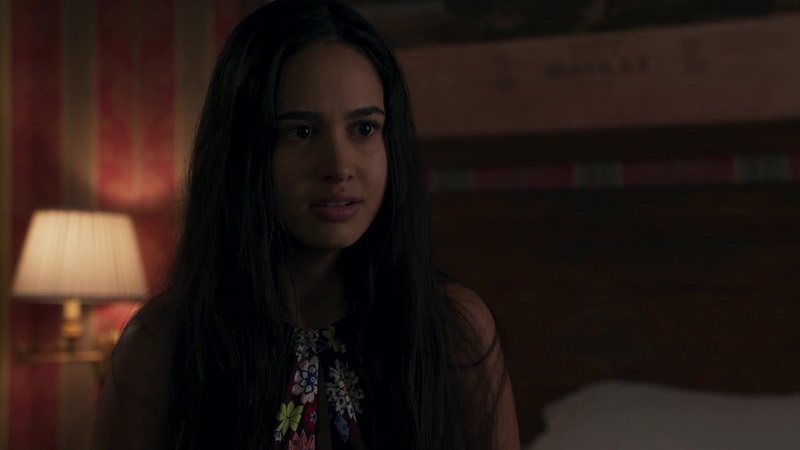
Party of Five doesn’t reveal immediately that they’d have a queer character among their main cast, a rarity among TV shows these day. In fact, the initial sides for the show described Lucia as “extremely smart, driven and a bit sheltered. She’s inexperienced when it comes to guys — she spends most of her free time excelling at school and extracurriculars.” The misdirection isn’t malicious, it’s meant to keep you focused on the thing that matters: that the five Acosta children have had their parents ripped away from them by a draconian immigration system. What’s most important, in the moment we meet Lucia Acosta, is that she’s been orphaned by her own government and left to face more than any teenage girl should ever have to do.
But slowly, Party of Five starts to drop breadcrumbs… and for a while, it feels like only you can see it. Everyone else reads Lucia’s actions as a byproduct of her parents’ deportation — her discomfort with her mother’s religion, the abrupt break-up with her friends — but you notice it. You notice it because her path feels so familiar… you’ve been there… and you realize before the show ever deigns to tell you that Lucia is queer.
“Your sister wants my eyes on her every second but you — I don’t know — I have a feeling you don’t want me to look at you very closely, am I right about that?” Lucia’s mother asks her, when the family reunites (temporarily) across the border.
It’s an incredible thing to be seen, to have the world see you for exactly who you are, but there’s something special about that time when the only people that can really see you are other queer people. Before you can say the words aloud, they know… they see you.. .and a community, unwittingly, builds. I’m just remiss that Freeform didn’t give Party of Five and Lucia, in particular, more time to grow that community.
Annalise Keating, How to Get Away With Murder
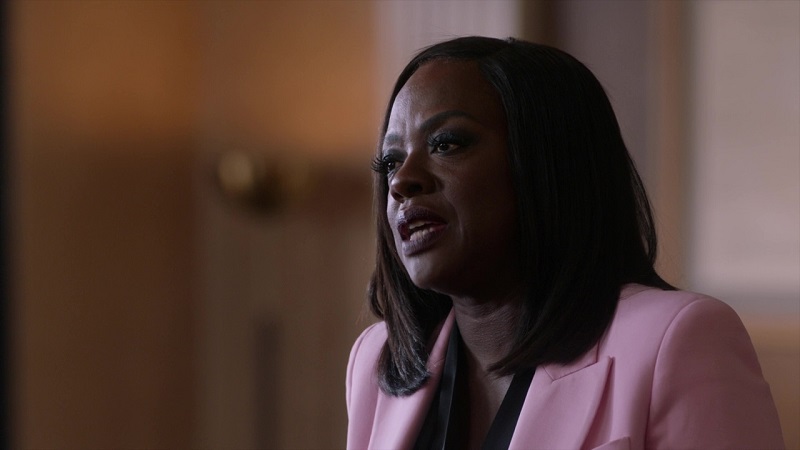
There’s a moment in the How to Get Away With Murder finale where, while giving her closing argument, Annalise mentions a detail about her history. If it’s something she’s mentioned before, I don’t recall… but the moment she says it, I wince. I’ve described HTGAWM as cutting too close to the bone — of being a weekly reminder of all the ghosts I’d worked so hard to keep at bay — and as the show takes its final bow, it takes one last swipe. It is another moment where my story and Annalise’s painfully interwine and another moment where I find myself a little glad that the show’s at its end.
But the story of Annalise Keating isn’t about those painful remembrances. It’s not even a story of happiness, much to my chagrin. Hers is a story of survival or, as Eve Rothlo eulogizes, “I think we all seek that person in our lives — someone who shows us it’s possible to survive whatever good or bad is thrown at you.”
Annalise Keating wasn’t just my first chance to feel seen, she was a model of survival (though, you know, hopefully I’ll manage without all the murders and conspiracies). There’s a way out of the trauma, Annalise Keating showed me that… and for that lesson, I’ll be forever grateful.
Riese
I’m not including L Word Generation Q or Work in Progress because I wrote about them last year!
Hattie, Twenties
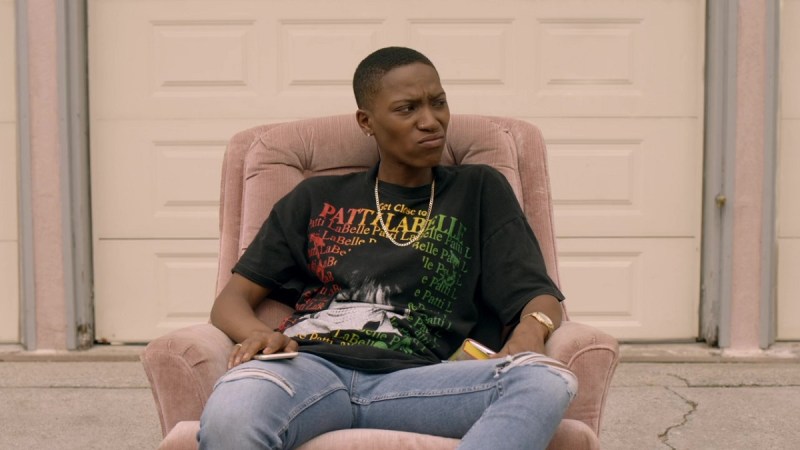
Lena Waithe proved there’s still some life left in the “thwarted yet overconfident writer tries to make it in Hollywood” genre with Hattie, who is as naive as she is ambitious and as charming as she is self-centered. Infused with familiar sweeping Old Hollywood soundtrack and distinctly modern prestige Los Angeles aesthetic, Hattie stands out as a black masc lesbian who, unlike similar stories in this vein, actually does have something new to say. Also she is very hot and very funny! I always relate to characters who say shit like, “I don’t want some stressful 9-to-5 that takes me away from my writing” (a sentiment shared by, for example, Eileen Myles in “Cool for You” and Sylvia Plath in “The Bell Jar”) because that’s how I felt in my twenties too!
Mia Warren, Little Fires Everywhere
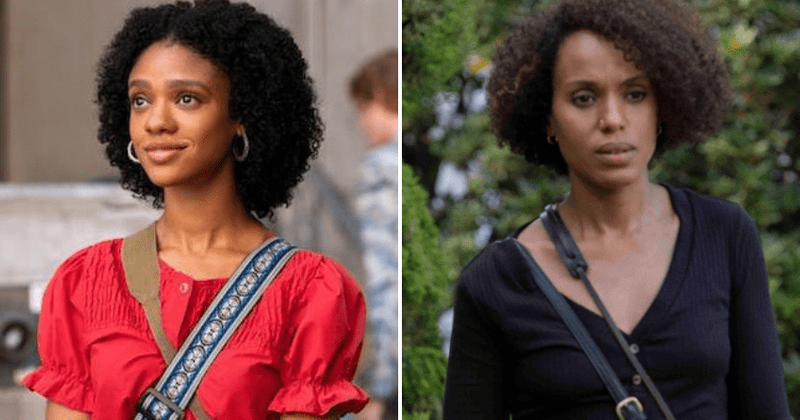
Kerry Washington and Tiffany Boone both executed award-worthy performances as this incredibly complex and captivating queer protagonist in a story which, in my opinion, elevated the source material. Together they brought to life this strong-willed artsy weirdo finding her way through the dizzying early ’80s New York City art scene as a teen and eventually finding herself at odds with the status quo and the frustrating denialism of late ’90s suburbia. “You didn’t make good choices, you had good choices” was a searing moment that I will never stop thinking about.
Carmen
Sophie Suarez, The L Word: Generation Q
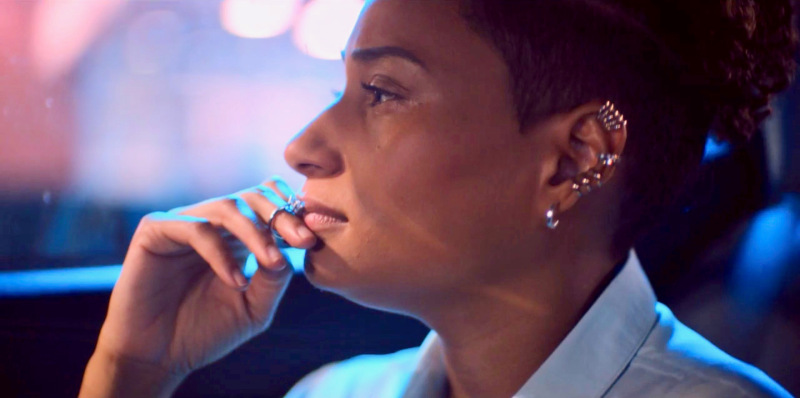
I don’t even know what to say about Sophie Suarez. She’s perfect. That’s all I got. Perfect human is perfect. KThnxBye.
Ok, so since Rosanny Zayas put so much of herself into this role, I can do more than four sentences in return. I loved The L Word: Generation Q. What brought me back to my third rewatch this year was Sophie Suarez.
In what’s ostensibly a fantasy series about (less white, still thin) rich lesbians, Sophie is grounded and real. She loves her family, she’s loud, she’s smart and funny. I knew, one some level, that I was always going to love Sophie — because queer Afro-Latinas on screen are a rarity and so we stick together — but I didn’t know that Rosanny Zayas was going to be absolutely resplendent. I didn’t know that watching Sophie would make my heart stop and then catch in my throat. It’s a standout because its anything but. Sophie feels like she could be standing in your kitchen in her boxer-briefs eating cereal right now, you know? She’s your bro. She’s in community with us, which makes it one of the greatest queer performances of this year.
Rob Brooks, High Fidelity
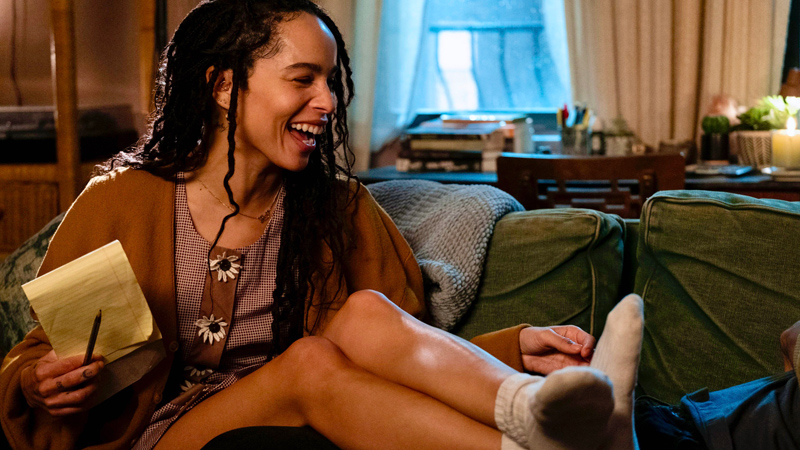
I’m going to take my minute to yell about how good Zoe Kravitz was this year in High Fidelity’s starring role, because I am still incredibly pissed that Hulu cancelled this great series in its first season and I will never have the opportunity to yell about her again! So!
As Robyn “Rob” Brooks, Zoe Kravitz fully ascended into exactly the kind of actor I’d always hoped she would be — part ironic smart ass, part quiet rock star swag, and charismatic beyond description. More than that, she’s comfortable taking up space on screen in ways that we haven’t been able to enjoy from her before. Rob is selfish, neurotic, unsympathetic, a bad friend, and emotionally stagnate. She’d rather have a pack of cigarettes and her lonely artistic obsessions over family obligations. She’s also in nearly every scene of High Fidelity, and it simply wouldn’t work without Zoe’s warmth beneath the dry wit drawing you in.
Over 10 episodes and five hours, Zoe Kravitz never loses her audience, even as Rob slowly descends into losing herself. And that’s what makes the character magic.
Mia Warren, Little Fires Everywhere
Moving from one queer Black Hulu queen — that I’ll never get another chance to scream about — to the next, let’s talk about Mia Warren. Little Fires Everywhere wasn’t mercilessly cancelled like High Fidelity (it was always intended as an one season miniseries), but if you missed it because the series had the unfortunate timing of premiering right when the pandemic first sent us into quarantine, please do yourself the favor of rediscovering it now.
A lot of people will talk about how mesmerizing Tiffany Boone was at capturing the likeness and physical habits of a young Kerry Washington in Mia’s flashbacks (and Riese is right, she is phenomenal) — but what most struck me about Kerry’s performance itself was how queer it felt, even though most of the explicit gay parts happen without her on screen. Kerry Washington reaches back to a young Mia within her mind’s eye, bringing forth a history that a different actress actually lived. It sounds complicated, but comes across as elegant and sublime to get lost in.
Everything about Mia Warren is at once messy, conflicting, and somehow above all — familiar. She’s fierce and self-determined, chaotic and terrified. I could have watched her forever.
Tegan Price and Analise Keating, How to Get Away with Murder
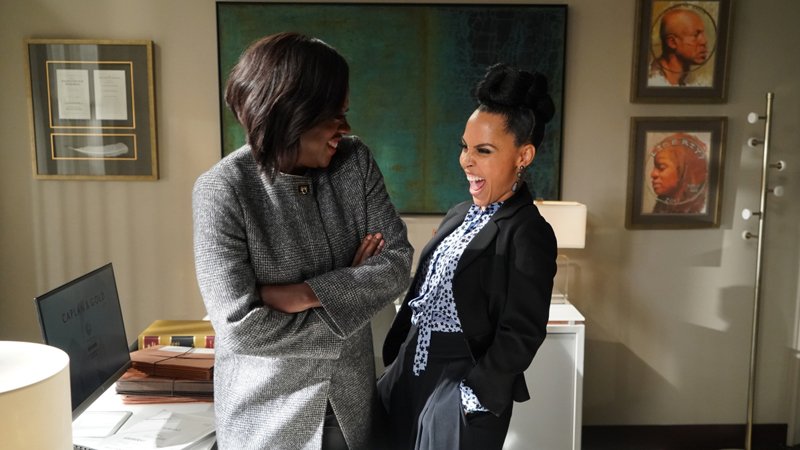
I wished with all my might for Tegan Price and Annalise Keating to end their time together in a romance. I dreamed of it. I thirsted for it. But what How to Get Away with Murder gave me instead was even more rare and precious — the Ride-or-Die friendship between two Black queer women at the top of their game and supporting each other when it seems the world is collapsing down around them. Amirah Vann is a criminally underrated talent on her own, and once she had a screen partner in Viola Davis… there really is nothing like watching masters of their craft at play.
Annalise and Tegan are individually iconic, and Annalise Keating remains to the my strongest argument the most important Black queer woman character we’ve had on television, but together Vann and Davis discovered a love between their characters that couldn’t be defined by simple categorization. And that was a gift.
Emma Hernandez, Vida
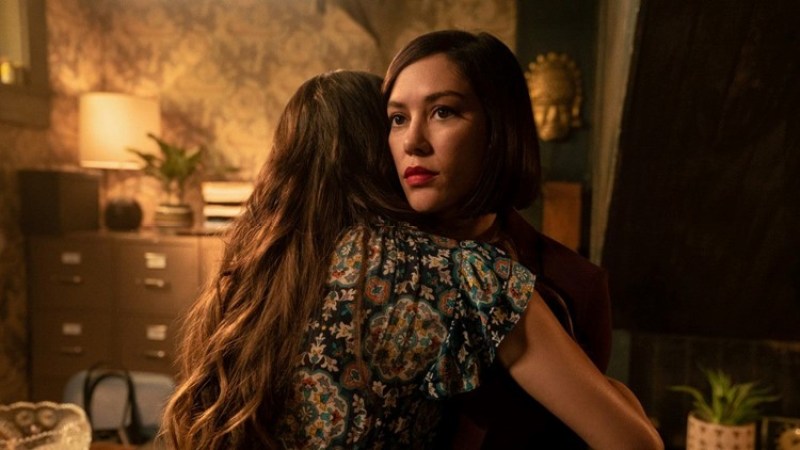
Emma Hernandez has made my Favorite Characters list every single year since Vida premiered three years ago; I am so proud to award her this perfect record because she damn well earned it. To tell the truth, it can be hard to write about Vida because after so many years of nearly exquisite queer television at every turn — what more can there possibly be left to say? Tanya Saracho left it all on the floor, and that’s never more clearly seen than in her writing of Emma.
I realize we’re supposed to limit ourselves to 2020 television, but to fully undestand how staggering — how breathtaking! — it is to have seen Mishel Prada’s work this year, we absolutely have to go back to 2018 when Emma first returned home to bury her mother. We don’t know yet that Emma is queer, and we learn almost immediately that her queer Amá kept the love of her life secret from her daughters. Its always assumed, by Emma and by us, that her mother’s own internalized homophobia is what cleaved an irreparable gash in their relationship, a wound full of ice and mutilation that Emma is now left to unpack in her mother’s wake. It’s not until Vida’s third act, ahem by that I mean this year’s third and final season, that the story unfolds into something unexpected, harrowing, and ultimately, providing Emma with the healing that she needs.
We often associate queer “coming-of-age” stories with teenagers, and though I wouldn’t have described it this way before now, Emma Hernandez is an adult coming-of-age. She breaks masks and finds bravery beneath what she buried.
There’s the stories we tell ourselves, and the stories that our families tell us about ourselves. But there’s also the stories our families tell to cover themselves from us. Somewhere between those stories is the truth.
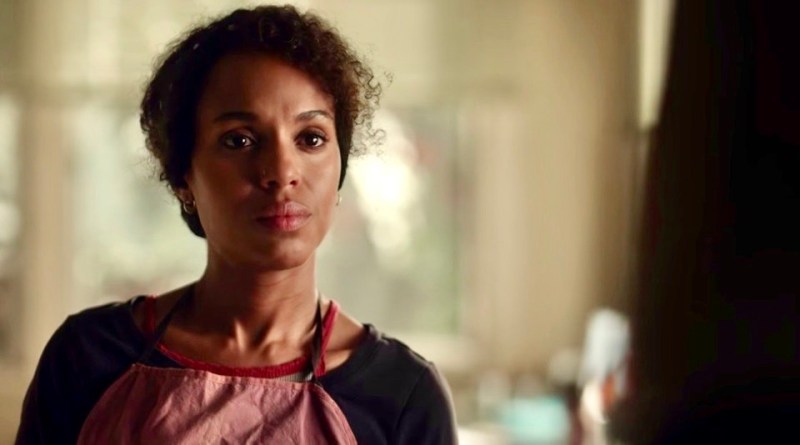

Since we’re talking about 2020 characters, can I get someone’s professional take on Lexi from the new “Saved by the Bell”?
I loved Little Fires Everywhere and I loved Kerry Washington’s performance, but the show didn’t make Mia Warren queer; she was already queer -aro/ace- in the book! Losing that representation in the adaptation hurt, and I really wish there could have been a more nuanced conversation in the queer media about the erasure of book!Mia’s asexuality, instead of just the uncritical praise (from what I’ve seen) for making Mia wlw.
Ikr! I seeing her under least favorite characters turned me off the whole list lol
Can I hear anything about Lilly and Ola from Sex Education or Syd Novak from I’m Not Okay with This?
I loved Syd! As a femme in my late 20s, I’m still trying to figure out what about this surly, angsty androgynous teenager made me feel so seen, but she did and IANOWT felt like a gift to watch. I did feel that the show & even the portrayal of Syd lacked some depth, but I loved it nevertheless and was looking forward to seeing more exploration in S2. Very sad it was cancelled.
I love Lily and Ola. Especially Lily because I adore characters who are unapologetially slightly odd/different.
Thank you for reminding me how much I fucking loved Mae Martins sitcom. I learnt what it felt like to have authentic representation by watching that. At points I was watching through my fingers because I’m so unused to relating so hard with characters and life situations.
Secondly, fuck me Natalie Morales was incredible in Dead to Me. What an absolute champ.
Doesn’t Uncle Clifford use she/her pronouns in P Valley?
If you think Jamie was underdeveloped you were not paying attention. She’s the absolute best lesbian character of 2020 with a legion of loyal of fans! Would we have liked her to have more screen time—yes, but what she did with what she had made her the best, most realistic lesbian character of all time!
What is the purpose of highlighting your ‘least favorite’ characters? Unless it is offensive in its representation, this kind of thing reads like a slightly mean-spirited dismissal of characters and stories that (you already know) some people will have enjoyed and connected with.
I didn’t realise we had the luxury of so much rep for this. Well Happy 2020 and all that.
I was expecting something about Teenage Bounty Hunters too but oh well..
i liked ur choices although the only ones i have seen is the supergirl and gen q and yes angie is a cutie raised by cuties and also sophie i like her been treated badly by dani thats why she cheated and yes i remember ur reviewing of gen q b4
WOOOOOOWWW.
LUCIA ACOSTA OF PARTY OF FIVE MENTION OPRAH GIF